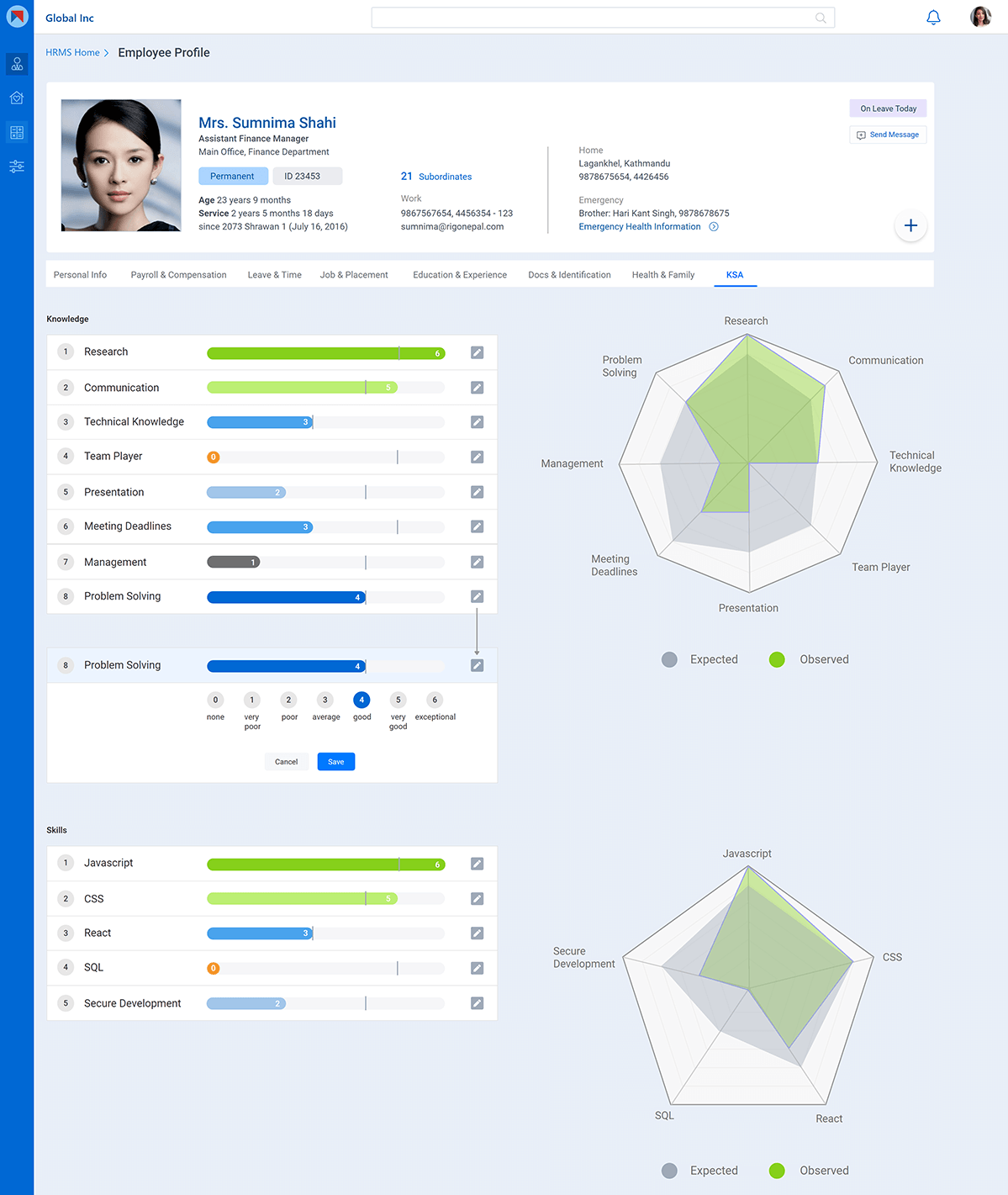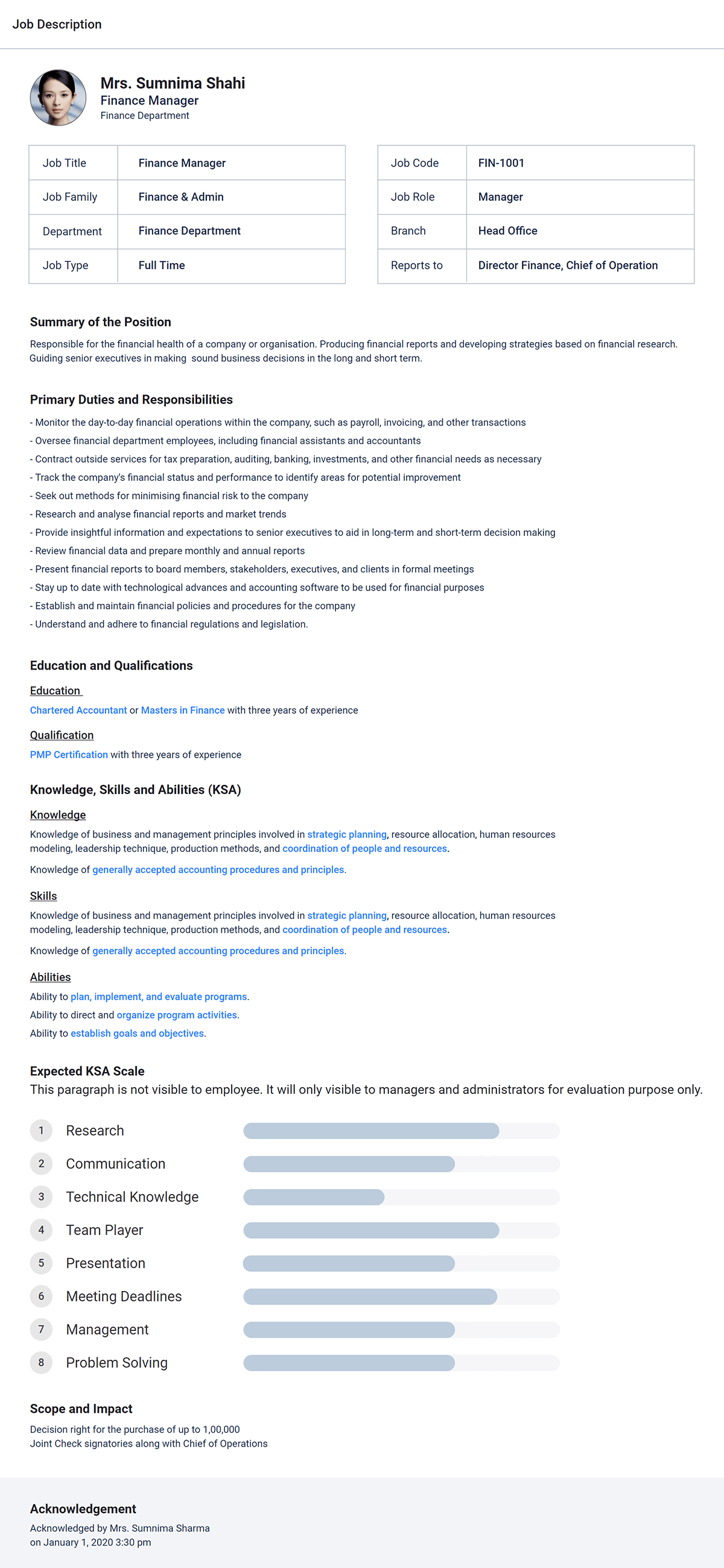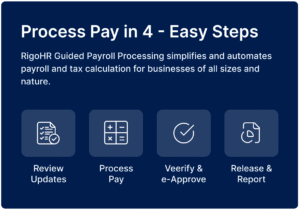Human resources isn’t a thing we do. It’s the thing that runs our business.
Steve Wynn
Many organizations put the employees to work without clearly defining what the employee should do and what is expected of them. This has several side effects. From employee’s perspective, the employee does not know what her duties and responsibilities are and what are the basis on which her pay is determined and performance will be evaluated. And from organization’s perspective, the organization may not be able to use the employee skill and effort to the best of the organization’s interest in a consistent manner.
In this setup, employees do whatever work comes in their way and what her manager asks her to do. Neither the employee can grow in her area of work not the organization gets consistent performance. Further, the employee may feel dissatisfied and under perform due to not matching her expectation from the job and her compensation and benefits received.
During the performance assessment, if it is done, arbitrary points and statements are used to assess the employee performance and the score becomes too much judgmental or subjective.
In the words of Linda C. Isenhour “A primary goal of an effective HR department is to ensure that the organization has the best available people working in the proper jobs at the appropriate time to maximize the organization’s productive capacity in pursuit of strategic goal achievement. To do this, however, the organization must know not only what each job entails but also what KSAs are necessary to perform the job successfully.”
Job Analysis and Job Description
For the right people administration, the HR Department must know what the organization objectives are and what type of people are the best fit to achieve those objectives. All the departments should carry out Job Analysis, what the job requires and what Key Skills and Abilities (KSA) employees should possess to perform the job successfully.
Job analysis is the systematic process of collecting information about jobs by determining their duties, tasks, activities, roles, authority and reporting structure. Based on the Job Analysis, KSA’s that are necessary to successfully perform the job can be determined.
There are many approaches to carry out Job Analysis. You can refer to HR Magazines, SHRM or CIPD resources and Textbooks to be familiar with those techniques. However, a general approach to job analysis involves the following steps:
- Identify what types of job information is needed like tasks, duties, responsibilities and knowledge required.
- Identify the sources of information about the job. Your organization might already have the job information for the jobs in your organization. If you have not, there are many job databases to jobs available freely or part of paid of services. For example, U.S. Department of Labor’s O*Net database (https://onetonline.org), may be a good source of information about jobs. The Society for Human Resource Management (SHRM) (https://shrm.org) also provides many job analysis tools and templates.
- Determine how you are going to collect the job data. It can include interviews, questionnaires or observation.
- Collect the job data and prepare final job descriptions.
You can consider using one or more of the standardized techniques for conducting job analysis to enhance the final job description—for example, functional job analysis, the position analysis questionnaire (PAQ), task inventory analysis, or the critical incident method.
Your organization environment and nature of jobs in your organization largely determine what approach or the method is fit for job analysis. But the ultimate outcome of the Job Analysis should be to obtain accurate and timely job descriptions.
HRMS Applications
The use of technology and Human Resources Management Software has made it very easy to carry out Job Analysis and prepare accurate and up-to-date Job descriptions.
There are two types of software that support in Job Analysis and Job Descriptions development and maintenance process – specialized tools and general HRMS software. You may use specialized tools for Job Analysis and HRMS software for maintaining an up-to-date database of Job Description and assigning those Job Description to your team members.
In this respect, Rigo HRMS can be of huge assistance to you as a HR Manager.

Rigo HRMS is the Best HR Software in Nepal when it comes to standardized HR Processes and HR Administration. It has the facility to create Job Profiles, Job Descriptions, define KSAs for Job Profiles and link those KSAs in Performance Assessment of the employees.
Capabilities of Rigo HRMS in Job Analysis, Job Description, KSAs and Performance Assessment include
- Create Job Profiles with Job Duties, Roles, Responsibilities and Authorities
- Define KSAs needed to perform the Job and level of expectations with respect to each KSAs
- Create Job Description for job position based on Job Profile. You can edit the Job Profile when assigning the Job Description or assign a common Job Description to same level of employee who perform same function with individual Job ID.
- Assess and review the expected KSAs you assigned to employees through JD Assignment and determine whether the employee exceeds, meets or lags behind on those indicators. Plus, review the employee JD periodically as part of Performance Review process.
- JD Acceptance by the employee from Employee Self Service Portal whereby the employee becomes clear of her duties, roles and responsibilities.
- Rigo is adding a new feature for the employee or departmental managers to suggest changes or updates in Job Description from self-service portal whenever there is change in job, process, environment or similar other factors.




